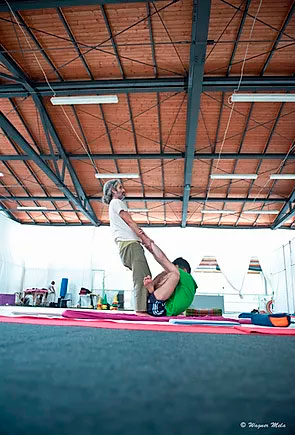WHAT IS THAI MASSAGE?
In Thailand it’s called “Nuat phaen boran”, which means “massage in the ancient way”, because it’s a form of healing work that has been practiced since ancient times. Different terminologies have been used to refer to this technique such as “Traditional Thai Massage”.
It developed in Thailand but it has strong influences in the healing traditions of India, mainly from the yogic tradition of Hatha yoga exercises, and for this reason it is also known as Thai yoga massage. It’s very effective in the gradual opening of the body, increasing mobility and flexibility, and decreasing body tension, and thus increasing good circulation and energy to body tissues, using stretching techniques and gentle pressures of different parts of the body. It can contribute to the improvement of the posture as well as to provide a general well-being to the person receiving this technique.
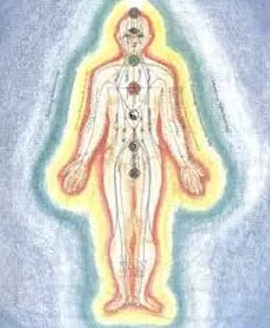
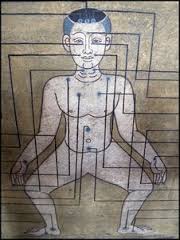 Thai massage is a combination of Ayurveda, Yoga and traditional Chinese medicine (TCM). These ancient systems of healing have as a basic principle the balance of the energy flow, which is called prana, or qi, or loom in the body. Traditional Chinese medicine, as well as the Yogic tradition believed that if the energy in the body gets blocked, it will cause disease, pain, emotional and psychological disorder within the body. In the other hand when the energy flows freely in the body, the person will be healthy and has a consequence will achieve a peaceful state of mind.
Thai massage is a combination of Ayurveda, Yoga and traditional Chinese medicine (TCM). These ancient systems of healing have as a basic principle the balance of the energy flow, which is called prana, or qi, or loom in the body. Traditional Chinese medicine, as well as the Yogic tradition believed that if the energy in the body gets blocked, it will cause disease, pain, emotional and psychological disorder within the body. In the other hand when the energy flows freely in the body, the person will be healthy and has a consequence will achieve a peaceful state of mind.
All Asian traditional healings traditions including Ayurvedic and Chinese medicine agree that there are total 72,000 energy lines in the body, although they have difference position and strength.It is a deep therapeutic form of healing for body, mind and spirit. Flowing like a meditation in movement, Thai yoga massage aims to balance the energies of the 5 bodies (physical, energetic, mental, conscious and cosmic), to release the energy blockages, and the corresponding physical symptoms. Thai massage uses the energy lines that are called Sen in Thai, or literally known as the Sen sip or the ten lines. Each Sen line is associated with different parts of the body, vital systems, physical symptoms, pain or disorders. Thai massage practitioners will use these lines to heal the body, mind and spirit by performing a holistic treatment.
In addition, energy lines are used to activate and vitalize the physiological and energetic processes, using dynamic and static techniques and much intention to take the receiver to a state of mental, physical and spiritual well-being.
Traditional Thai massage is an ancient tradition of healing art. The origins can be traced back more than 2,500 years to the Ayurvedic medicine of India and the expansion of Buddhism in Asia. It was brought to Thailand by doctors of Ayurvedic medicine (Indian medicine) and Buddhist monks. It has been performed in the temples up to the present day as prevention, healing and spiritual practice to apply the qualities of minfluness (sati), loving-kindess (metta), compassion (karuna), sympathetic joy(mudita) and equanimity (uppekha), obtained by the practice of Vipassana meditation.
The founding father of Thai massage, Jivaka Kumarbhaccha, was an advanced practitioner of yoga and a physician in the ancient healing tradition of Ayurveda (which is a science that reconstructs harmonious life). Of all the distinguished people that attended Jivaka’s sessions, the most recognized was the Buddha. In this way this ancient massage expanded to Thailand with the passage of Buddhism across the Asian continent. The traditional Thai massage was developed for millennia within the atmosphere of Buddhist temples. It thrived as a way in which people who had a spiritual practice shared the benefits of meditation and compassion in a physical form.
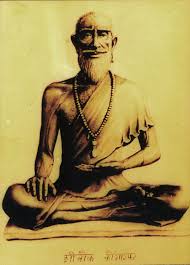
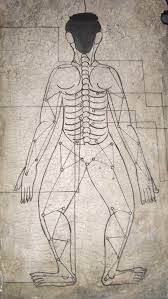 It is a unique style of complete body treatment. Unlike western styles, it is performed on the floor using a mat and the receiver is fully clothed. It combines acupressure work on energy points, palm pressure on muscles, tendons and energy lines and yogic stretching exercises always along the lines, to create a holistic experience for body, mind and soul. This treatment is rather unique since it is not only physically performed but also causes emotional and mental stimulation, working with the constant rhythm of breathing and continuously stimulating the energy lines. This allows the treatment to reach the subtle bodies of a human being. Unlike other types of massage in which the recipient is passive, in Thai yoga massage the patient becomes an active participant and the operator also benefits from mental attitude, correct breathing, work rhythm, and constant correction of his posture during the execution of the treatment. Both the recipient and the operator can also perform meditation during the treatment, to allow access to a level of listening, presence and healing not only physical but deeper.
It is a unique style of complete body treatment. Unlike western styles, it is performed on the floor using a mat and the receiver is fully clothed. It combines acupressure work on energy points, palm pressure on muscles, tendons and energy lines and yogic stretching exercises always along the lines, to create a holistic experience for body, mind and soul. This treatment is rather unique since it is not only physically performed but also causes emotional and mental stimulation, working with the constant rhythm of breathing and continuously stimulating the energy lines. This allows the treatment to reach the subtle bodies of a human being. Unlike other types of massage in which the recipient is passive, in Thai yoga massage the patient becomes an active participant and the operator also benefits from mental attitude, correct breathing, work rhythm, and constant correction of his posture during the execution of the treatment. Both the recipient and the operator can also perform meditation during the treatment, to allow access to a level of listening, presence and healing not only physical but deeper.
It has the quality of giving many benefits to those who receive including: better blood and lymphatic circulation, the release of muscle tension, greater mobility and flexibility, as well as relief from stress, improve pain management, balance mind, body and spirit, increase immunity, reduce depression and anxiety, improve relaxation, improve neurological function, improve range of motion, prevent premenstrual syndrome, promote inner peace and calm, provide rejuvenation, strengthen internal organs and increase the flow of life force and life energy. However, Thai yoga massage goes further; his more specialized techniques will help promote a balance of all systems, body, mind and spirit to create the complete sense of well-being. Expect to find yourself relaxed, restored and rejuvenated.
STYLES OF MASSAGE
There are two main styles of Thai massage that are known and practiced nowadays in Thailand. The Southern style, practiced and taught originally at the Wat Pho temple in Bangkok (http://www.watpomassage.com/), and the Northern style practiced and taught originally at the “Old medicine Hospital Shivago Komarpaj foundation” in Chiang Mai (http://thaimassageschool.ac.th/).
There are some differences between the two traditions, even though they actually use the same principles of work. The Southern style focuses primarily on the acupressure approach to stimulate and activate the energy lines, called “Sen”, and it is performed applying a stronger pressure; while Northern style is slower and more gentle even though it can still be a very strong massage at times.
Unlike the Southern style, this massage focuses on applying more gentle pressure and using stretching exercises that resemble that of Hatha yoga to activate and stimulate the energy lines.. For this reason the Northern style is also called Thai yoga massage and is the style that I mainly studied and practiced in Chiang mai for many years, and therefore it is the style that we will learn in my courses, retreats and workshops.
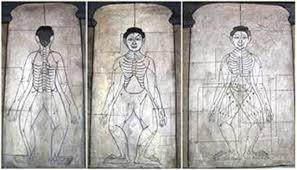
IMPORTANT ASPECTS OF PRACTICAL THAI MASSAGE
And how do you keep a present state of mind?? The healing effects of Thai massage is definetely improved by the balanced state of mind of the practitioner. For these reasons we introduce the daily practice of Hatha yoga and Vipassana meditation into our training in order to learn to center and eventually empty the mind.
Being a form of ancient healing practice in Thailand for over 2000 years, the very basic foundations of a proper attitude of mind and spirit lies in the Bhuddhist practice of developing the four divine dwellings of the mind, basically four noble mental states which are:
I. Love (Metta)
Love, without desire to possess, knows well that in the ultimate sense there is no possession and no possessor. This is the highest love; without speaking and thinking of “I,” knowing well that this so-called “I” is a mere delusion; without selecting and excluding, knowing well that to do so means to create love’s own contrasts: dislike, aversion and hatred; embracing all beings: small and great, far and near, be it on earth, in the water or in the air.
II. Compassion (Karuna)
It is compassion that removes the heavy bar, opens the door to freedom and makes the narrow heart as wide as the world. Compassion takes away the inert weight from the heart, the paralyzing heaviness; it gives wings to those who cling to the lowlands of self. Compassion reconciles us to our own destiny by showing us the life of others, which is often much harder than ours. May such compassion arise in our hearts! Compassion that is the sublime nobility of heart and intellect knows, understands and is ready to help. Compassion that is strength and gives strength: this is highest compassion.
III. Sympathetic Joy (Mudita)
Your life will gain in joy by sharing the happiness of others as if it were yours. Have you ever observed how in moments of happiness men and women’s features change and become bright with joy? Did you never notice how joy rouses people to noble aspirations and deeds, exceeding their normal capacity? Did not such experience fill your own heart with joyful bliss? It is in your power to increase such experience of sympathetic joy, by producing happiness in others, by bringing them joy and solace. Sympathetic joy means a sublime nobility of heart and intellect which knows, understands and is ready to help; that is strength and gives strength: this is the highest joy.
IV. Equanimity (Upekkha)
Looking into life we notice how it continually moves between contrasts: rise and fall, success and failure, loss and gain, honor and blame. We feel how our heart responds to all this with happiness and sorrow, delight and despair, disappointment and satisfaction, hope and fear. These waves of emotion carry us up and fling us down; and no sooner do we find rest, then we are in the power of a new wave again. How can we expect to get a footing on the crest of the waves? How can we erect the building of our lives in the midst of this ever restless ocean of existence, if not on the Island of Equanimity? Equanimity is the crown and culmination of the four sublime states. But this should not be understood to mean that equanimity is the negation of love, compassion and sympathetic joy, or that it leaves them behind as inferior. Far from that, equanimity includes and pervades the three of them fully, just as they fully pervade perfect equanimity.
